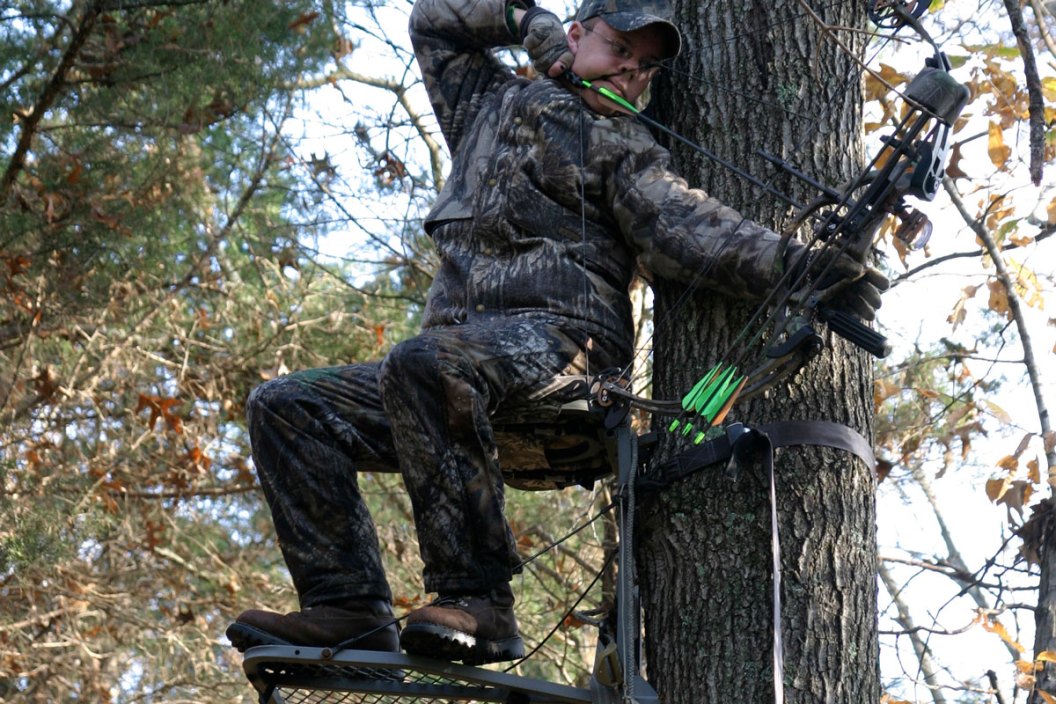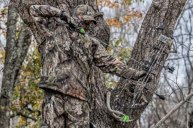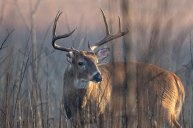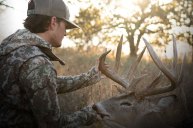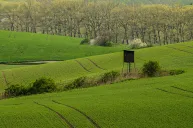Hunting success is largely determined by preparation, which all begins with where you set yourself up.
As deer hunting seasons continue to creep in, hunters far and wide are getting checking those last few boxes off the preseason to-do list. While tasks such as stocking up on gear and ammo, sighting in at the range and buying licenses and permits are all necessary, your efforts will go by the wayside if you don't have a favorable place to hunt.
Now, the decision to hunt from a ground blind or a treestand really is a matter of preference, but where you place your stand should be founded on thorough research.
While most experienced hunters are all too familiar with this process, we're here to throw out a few tips for those who haven't spent as much time in the deer woods.
Follow the deer
It's pretty simple: don't hunt somewhere unless you know for certain deer frequent the general area. Whitetail deer don't haphazardly meander around the woods; they follow a pattern, which can work in your favor if you're willing to put in the time.
Deer hunting is a serious commitment of time, so make your time in the woods worthwhile by scouting in the offseason. If you were wise enough to set up trail cameras, zero in on the areas with the most traffic and set up nearby.
We're getting close to the start of the season, though, so if you didn't put out any cameras, it's probably too late to start now. However, there are still plenty of ways to spot deer movement without actually seeing any deer.
First, look for the essentials deer need to survive. If you have access to any areas with a water source, you can't go wrong starting there. You can also search for food sources (if you didn't already plant food plots), bedding areas, tracks, scrapes and rubs on branches and twigs, but be sure not to spend too much time in your prospective hunting area this close to opening day, as you'll run the risk of disturbing the area and pushing deer out.
Keep an eye out for draws, too, as deer will use these as corridors to travel.
Easy access
While it's important not to disturb your hunting area during the scouting process, that same stealthiness is required the morning you take to the woods. You don't want to be making a ruckus through miles of woods on the way into your stand just to scare away all the deer that are already nearby.
Try your best to find a spot you can get into quickly, quietly and without excessive navigation.
For future hunting seasons, try your best to clear a path for entrance and exit routes to your stand for an effortless commute.
Climbers need a sturdy tree
If you're using a climber or a treestand that requires the support of a tree, make sure to find a tree you can trust.
You're going to be up there for quite a while, so the last thing you want is to be feeling uneasy about your safety, or uncomfortable because your tree is angled funny or moving too much.
Try setting yourself up a couple of times before opening day to make sure that tree is one you can depend on the first time that mature buck walks through during those early-season hunts.
No shooting lanes, no shot
Even if you're in the greatest honey hole any deer hunter's ever seen, it won't matter if you can't get shot opportunities. Look for natural shooting lanes, and ideally, visibility from all angles. If you're up there in a web of branches and can only take a shot in one direction, then you're only going to get that shot.
Similarly, you want to have free range of motion for whenever the time comes to raise your rifle or pull back on your bow.
If you have a great spot but no shooting lanes, try to make some by breaking or sawing any impeding branches.
On the other hand, though, be sure your tree stand placement doesn't make you too visible where you stick out like a sore thumb. Many hunters like to set up right where the woods begin on a field edge, where they can hide themselves but still see plenty in front of them.
Additionally, you have to account for wind direction. Deer can smell even better than they can see, so always try your best to set up downwind of your hot spots, as a breeze in the wrong direction can scare off a big buck just as fast as the sound of a discharged rifle.
And, last but not least, make sure you wear a safety harness. Take it from any of the countless hunters who have fallen out of a stand: it does happen.
NEXT: 4 PUBLIC LAND HUNTS THAT SHOULD BE ON EVERYONE'S BUCKET LIST
